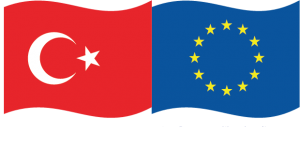France
Summary
The first waymarked walking routes were developed in France, and the red-white blaze of the FFRP is now familiar all over France on well-managed routes. So the 780km Via Francigena in France is just one route amongst many. It begins at Calais, runs mainly south and crosses the Swiss border just after Pontarlier. 47 stages through France are described on the official website https://www.viefrancigene.org/en/resource/tour/la-via-francigena-in-francia/. The Via Francigena stretch in France is approved by Fédération Française de la Randonnée Pédestre and marked as GR145®.
GR® are long-distance footpaths in France featuring a good standard of safety and quality of the route.
Cyclists are currently using Eurovelo route no 5, although there is no definite itinerary, only a list of towns through which it passes.
Detailed Description
Since the 1930’s, the French have been waymarking their walking routes and the red-white blaze of the FFRP (Fédération Française de la Randonnée Pédestre) is now familiar all over France. The major routes are known as GR’s (Grandes Randonées), but there are various local variants and horse-riding routes which are marked in different colours. All are well-signed and managed, as walking tourism plays a very significant role in the rural economy of France, especially for French themselves, but also for Dutch, German and English walkers. The most popular pilgrim route through France is undoubtedly the Camino de Santiago, which currently attracts many more walkers than the Via Francigena. From 1987, pilgrims revived the route to Compostella, then a few years later the route through France and Switzerland to Rome. The two main pilgrimage routes have been linked by cross-routes and share some sections in common. So the Via Francigena in France is just one route amongst many.
Because of this solid base of walking and pilgrimage tourism, hotel or B&B accommodation is available in most small towns. Some monasteries also provide pilgrim refuge, as well as some youth hostels and campsites. Local tourism offices are helpful to walkers; many have online resources so that you can choose and reserve accommodation in advance and accommodation links are given on the official website.
The Via Eurasia / Via Francigena through France begins at Calais, runs mainly south and crosses the Swiss border just after Pontarlier. It has 47 stages and is 780 km long. In France, although the GR145 forms the approximate line of the original route, the earlier parts may not be well marked, and there are alternative itineraries in use.
Parts are being reviewed currently, so check for latest information. From Haute Marne onwards, the route is better defined and completely marked. There is a topo-guide to the GR145, produced by the FFRP, the main waymarking authority. Cyclists are currently using a route known as the Via Francigena in France, although there is no definite itinerary, only a list of towns through which it passes. So far the Italian section is the only part completely defined and mapped as Eurovelo route no 5.
History
The first pilgrim route, the Lombard Way, ran though the Frankish kingdoms of Neustria and Burgundy before entering Lombard territory. After 774, it became known as the Via Francigena. During the Middle Ages, the Frankish kingdoms became united and centred on Paris, where French kings were crowned and buried.
Unlike England, France remained a Catholic country with direct allegiance to the Pope in Rome. Pilgrimage was promoted in 1300, when Pope Boniface VIII declared a Jubilee year, with complete forgiveness of sins for pilgrims to Rome. Jubilee years were declared every 25 or 50 years thereafter, until the Reformation.
The Via Francigena was not a single road, like a Roman road, paved with stone blocks and with stables provided at intervals, where official travellers could change horses. Rather, it comprised several possible routes that changed over the centuries as trade and pilgrimage waxed and waned. Depending on the time of year, the political situation, and the relative popularity of the shrines of the saints situated along the route, travellers may have used any of three or four crossings of the Alps and the Apennines. Unlike the Roman roads, the Via Francigena did not connect cities, but relied more on abbeys to accommodate travellers.
Web sites for information and maps:
The Routes du Terroir site gives an overview of the route from the point of view of gastronomy, motoring and general tourism. http://laviafrancigenaenfrance.fr
The CVF (Camminando sulla via Francigena)
http://viefrancigene.com/le-tappe/ gives a series of maps, GPS downloads and descriptions in Italian for 49 stages of the route. http://www.viefrancigene.it/le-tappe/francia.html has similar information.
The alternative organization Association Internationale Via Francigena http://www.francigena-international.org/ has a website with its own resources.
Two pilgrimage sites gives a listing of resources in various languages. – Jacobeo http://www.xacobeo.fr/ZE1.13.Fran.htm and Confraternity of St James http://www.csj.org.uk/via-francigena/











